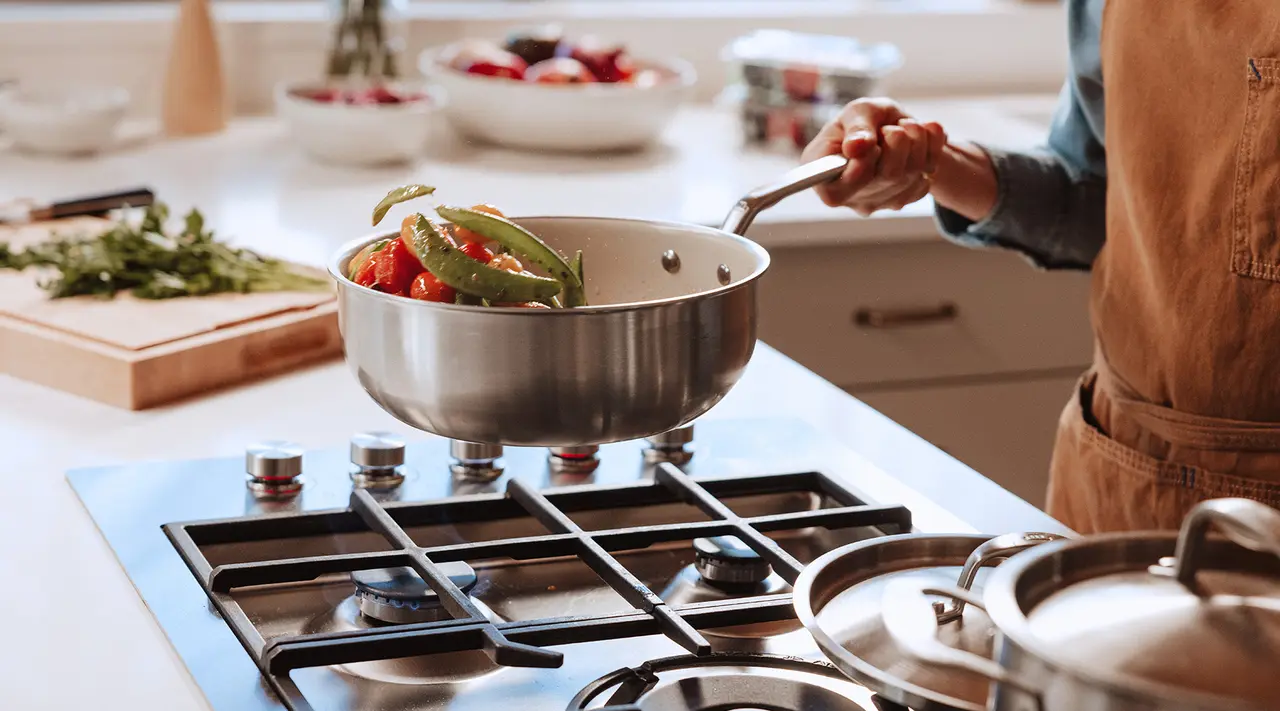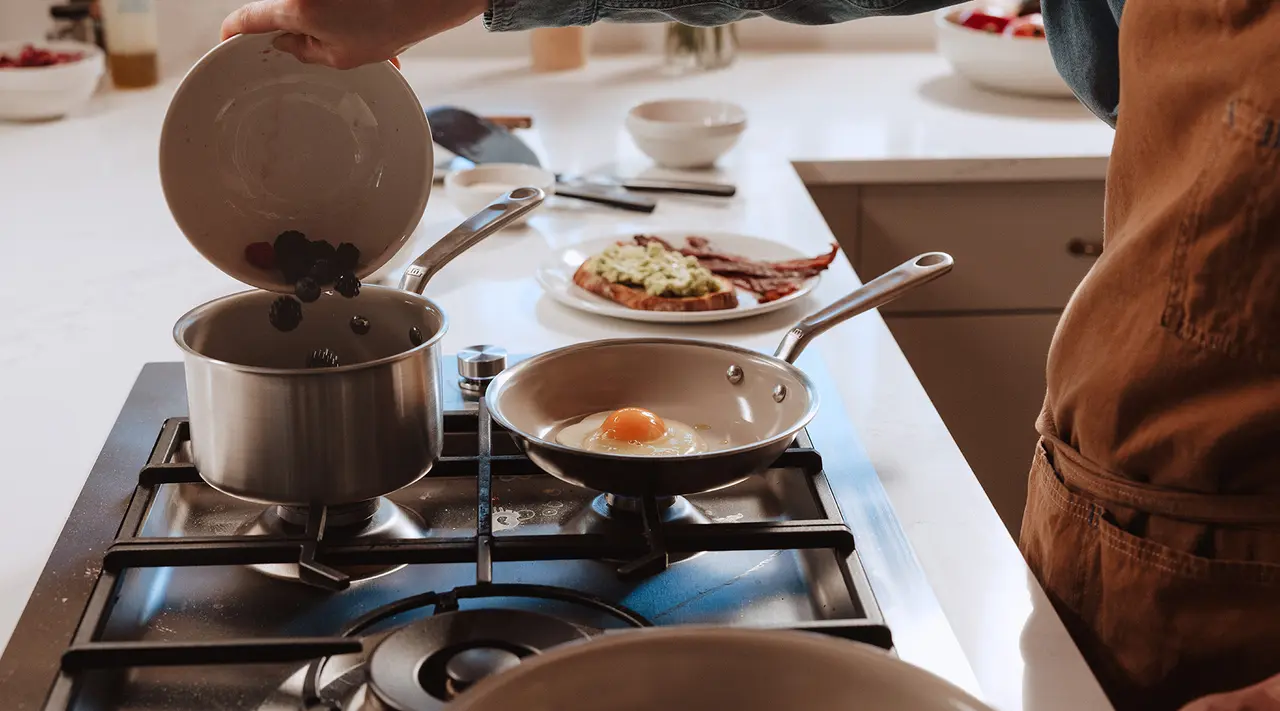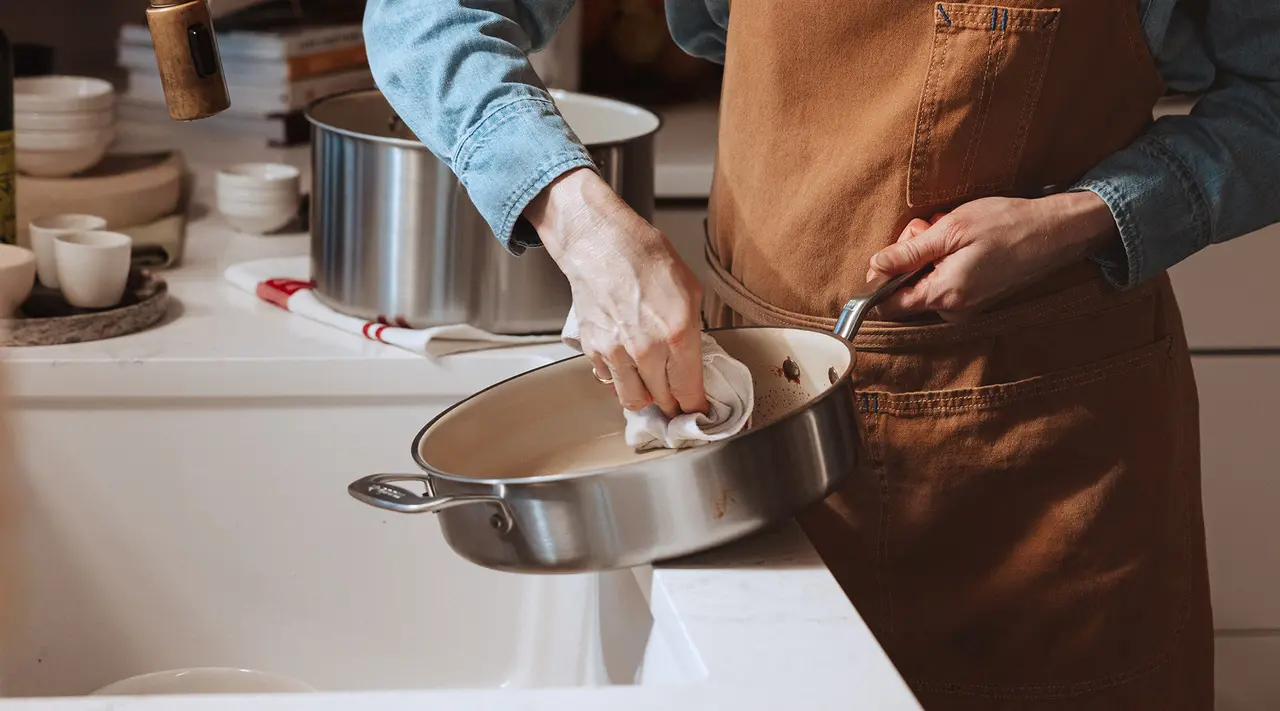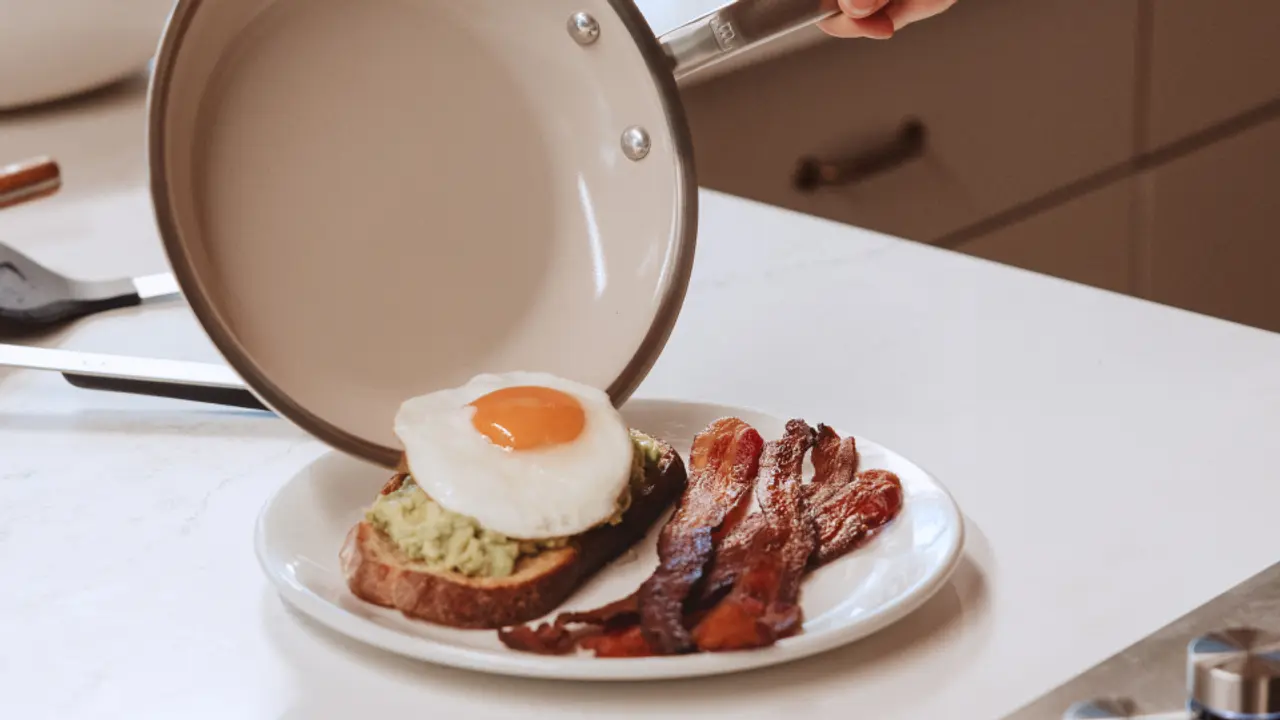If you’re not already a ceramic cookware convert (or you’re just now learning about it for the first time), you probably have a few questions—likely starting with is it actually as safe as everyone claims? (Short answer: yes, ceramic cookware is 100% safe to cook with and eat off of.)
We’re going to go over all of that and more. Read on to learn all about how ceramic pots and pans are made, how they work, and why you can (and should) feel safe buying them for yourself.
Understanding Ceramic Cookware

When we talk about ceramic cookware, we’re not talking about delicate pieces of enameled porcelain or stoneware—though these can also be a safe cookware option (as long as they’re both lead- and cadmium-free). Rather, we’re talking about pots and pans made by coating a metallic base, usually aluminum and/or stainless steel, with layers of a naturally-derived "ceramic" coating applied on top.
Because this coating is a naturally derived substrate (rather than lab-made like traditional non stick), ceramic cookware is often presented as a healthier, more transparent alternative to traditional non stick.
What are the Safety Concerns Surrounding Ceramic Cookware?

Like any new product, ceramic cookware has drawn its fair share of skepticism, mainly about whether it’s safe for long-term use. To set the record straight, ceramic cookware is 100% safe to cook with and eat off of. As with any new cookware, you should definitely make sure to do a bit of research before welcoming a new piece into your kitchen; and be aware that, like other coated non stick options, the ceramic coating will not last forever.
The best step to take here is to make sure that you’re buying cookware that’s free of heavy metals like lead and cadmium. While these are more likely to be found in vintage, traditional ceramic cookware (i.e., glazed stoneware or porcelain), it doesn’t hurt to check the packing or manufacturer website for a “heavy metal-free” or “lead- and cadmium-free” label.
If you’re concerned about PFAS chemicals in your cookware, note that ceramic cookware typically doesn’t contain any PFAS whatsoever, hence its growth as an alternative to coated non stick. For transparency's sake, many manufacturers will still label their products “PFAS-free” or “PFOA-free” to comply with state or federal regulations.
Our CeramiClad™ Non Stick Cookware is stamped, coated, and assembled in the USA and Italy with a nontoxic ceramic coating, made without harmful chemicals and heavy metals like lead and cadmium.
Tips for Safe Use and Care of Ceramic Cookware

Once you’ve got your hands on a shiny new ceramic pan, there are a couple of factors to keep in mind when cooking with it to preserve the coating.
First, there’s proper preheating procedure: just like with traditional non stick, you’ll want to avoid heating an empty pan as this can cause your pan to quickly overheat and compromise the non stick coating (meaning you’ll need to replace it much sooner).
To avoid degradation of the coating, preheat with an oil, fat, or ingredient in the pan and keep to low or medium heat. Only place a ceramic pan in the oven if it's labeled oven-safe (like Made In CeramiClad™ is)—in which case short periods of time are recommended.
Another way to keep your pan—and your food—safe is to use the right cooking utensils. As with other coated cookware options, it’s best to avoid sharp-edged tools like metal spatulas and tongs, as these can damage the coating or cause it to potentially chip off into your food. Instead, opt for tools made from softer materials like wood or silicone, which are much less likely to scratch the coating.
Ready to Shop?
Everyone deserves a great non stick pan in their life—so if ceramic is what calls to you, know you're getting a safe option. And with our Italian and USA-assembled CeramiClad™ Non Stick Cookware, you're not only getting a nontoxic coating free from harmful chemicals, but one applied over top of Award-Winning, 5-Ply Stainless Clad. The end result is an even heating, expertly crafted pan that cleans up in seconds.
























